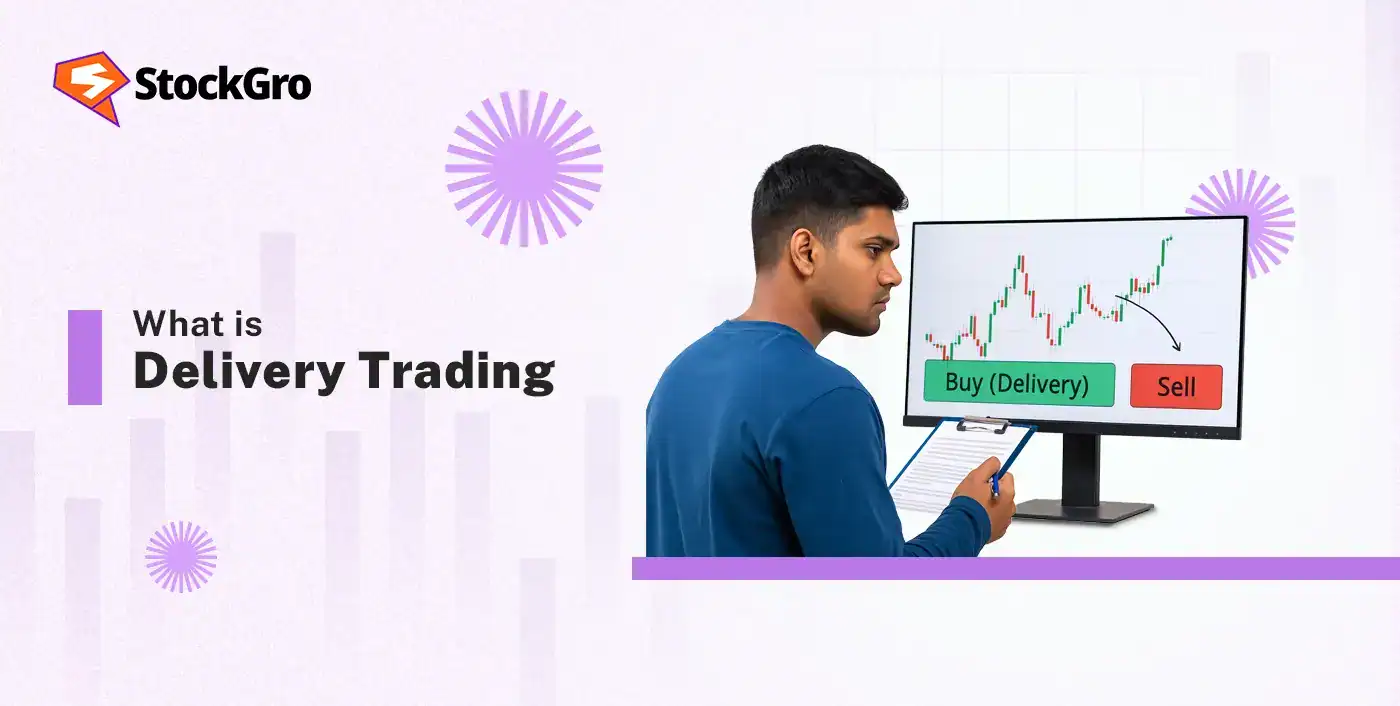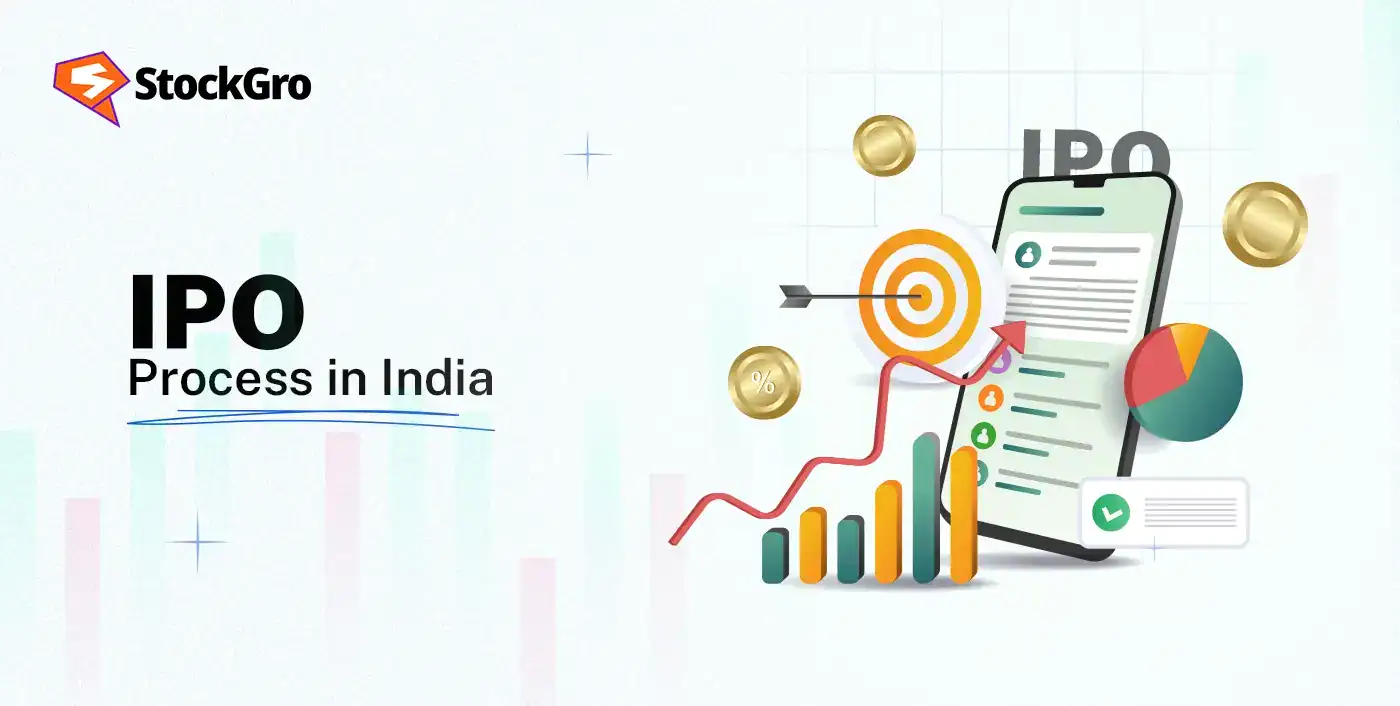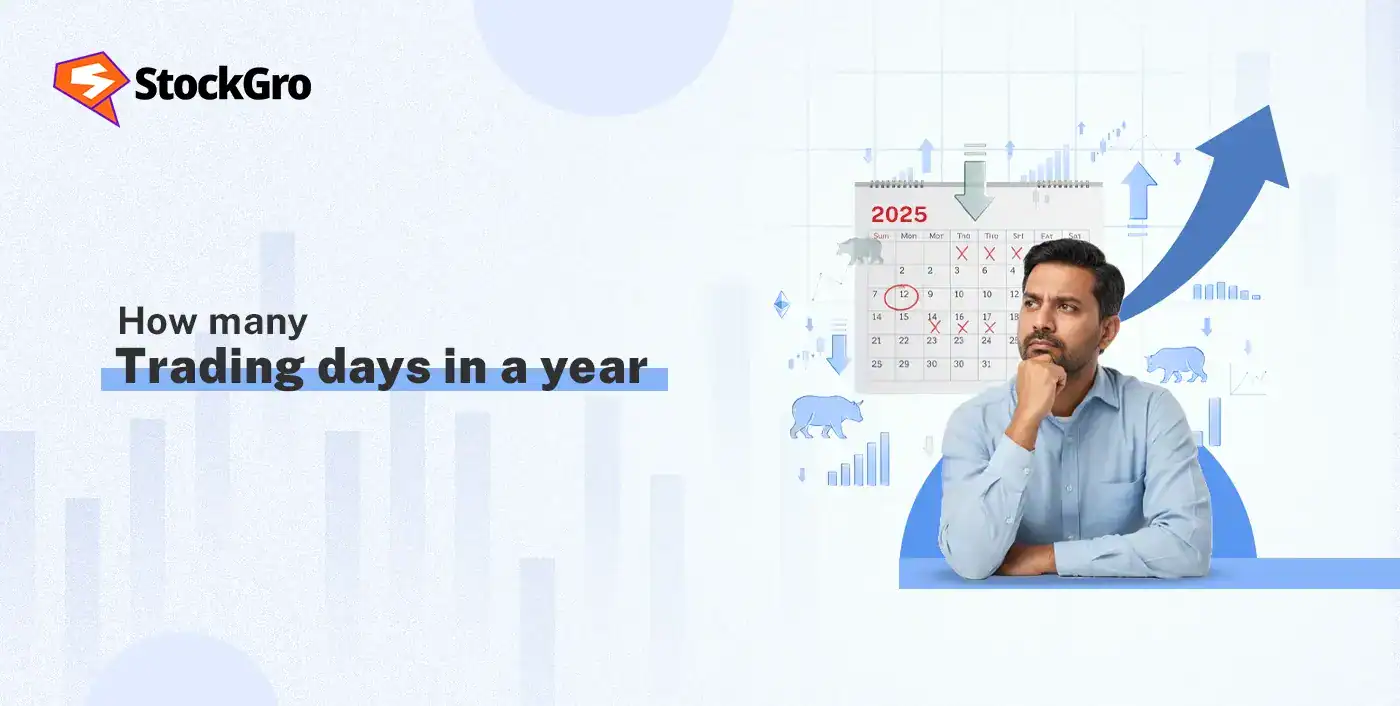
Buying a stock thinking you’ll sell it by evening but the market doesn’t move your way. Now you’re stuck wondering what happens if you don’t sell it. That’s where the question arises: what is delivery trading and what makes it different? With nearly 44% of total trades in India during FY25 being delivery-based, it’s clear that holding shares beyond a day is more common than you might think. This blog breaks down its meaning, rules, and more in a clear and easy-to-follow manner.
What is Delivery Trading
In delivery trading, investors buy shares and retain them for multiple days instead of selling the same day. Here, shares move to the buyer’s Demat account instead of being squared off the same day. This indicates that the buyer becomes the rightful holder of the shares and can retain them for any time span, from a few days to several years.
How Delivery Trading Works
The process begins when a person places a buy order using their trading account, selecting “delivery” as the trade type. The total cost of the shares has to be settled upfront by the buyer. The trade request is matched with a corresponding seller’s order on the exchange platform. Once the deal is confirmed, the settlement process begins.
The shares are then electronically transferred and stored in the buyer’s Demat account, which usually takes one business day (T+1 settlement). The buyer officially owns the shares and can decide when to sell them, whether soon or after a long period.
How to Start Delivery Trading
To get started with delivery-based share trading, several basic requirements are needed, such as:
- Open a demat account: This is an electronic account needed to hold your shares safely.
- Link a bank account: You need a bank account to add funds for buying shares and to receive money when you sell them.
- Choose a stockbroker: A registered stockbroker provides the demat and trading accounts and helps execute your trades.
- Complete KYC: Finish the Know Your Customer (KYC) process by providing official identification and address documents.
- Fund your account: Transfer funds into your trading account through your connected bank account.
- Research and buy: After studying the stocks you are interested in, you can place a buy order using your trading platform, making sure to select the ‘delivery’ option.
Delivery vs Intraday Trading
Delivery and intraday trading are two distinct trading methods that operate differently in timing and intent.
| Feature | Delivery trading | Intraday trading |
| Meaning | Buying shares and holding them overnight (more than one day). | Executing both buy and sell orders for shares within a single market session. |
| Ownership | In delivery mode, the shares are credited to your Demat account, granting legal possession. | No ownership transfer occurs as positions are closed the same day. |
| Time frame | Can be held for any duration (days, months, or years). | All trades must be closed before the market closes for the day. |
| Funds | You must pay the full price (100%) of the shares. | Traders can use margin (borrowed funds) to trade larger amounts. |
| Goal | Often used for long-term wealth creation or capturing medium-term trends. | Seeks earnings from minor price changes during the same trading day. |
Benefits of Delivery Trading
Taking delivery of shares provides several advantages for an investor. The main benefits are:
- Full ownership: The primary benefit is becoming a shareholder of the company. Holding shares grants access to dividends, bonus issues, and participation in company voting.
- Avoids leverage risk: You pay the full amount for the shares, so you avoid the risks associated with margin or leverage, where losses can be magnified.
- Long-term growth: There is no time limit to sell. An investor can hold shares for many years, allowing the investment to grow in value over a long period.
- No time pressure: Unlike intraday trading, there is no need to sell the shares by the end of the day. Investors need not monitor the market all the time in delivery trading.
- Reduced stress: Since you are not forced to act on daily market movements, delivery trading can be less stressful. Focus shifts to long-range company strength rather than day-to-day price swings.
- Potential for compounding: By holding investments for a long time, the returns you earn can also start earning returns, a process known as compounding.
Delivery Trading Charges
When executing delivery trades in the Indian stock market, investors incur several mandatory and broker-specific charges, which include:
- Securities transaction tax (STT): This is a central government tax levied on the transaction value. For equity delivery, STT is charged at 0.1% on both the buy and sell sides of the transaction.
- Brokerage: While many discount brokers offer zero brokerage for equity delivery, traditional or full-service brokers may charge a percentage of the trade value or a flat fee per order.
- Exchange transaction charges: Both the NSE and BSE levy a small fee on the total turnover. NSE charges 0.00297% and BSE charges 0.00375% on the turnover.
- DP (depository participant) charges: These are depository charges (CDSL or NSDL) applied only when shares are debited (sold) from the Demat account. This is typically a flat fee per script, per day.
- Other levies: This category includes SEBI turnover fees (₹10 per crore), Stamp Duty (0.015% on the buy-side), and 18% GST applied on brokerage, exchange transaction charges, and SEBI fees.
- Investor protection fund trust (IPFT) charges: about 0.0001% of the total traded value.
Delivery Trading Rules in the Indian Stock Market
The regulatory framework for equity delivery trading in India, governed by SEBI and the exchanges (NSE/BSE), is centered on the settlement and ownership of shares. The primary rules are as follows:
- T+1 settlement cycle: The Indian stock market operates on a T+1 (Trade day plus one business day) settlement cycle. This is the mandatory timeline for settling all equity trades.
- Share credit and debit: For a buy transaction, the investor must pay the full amount, and the shares are credited to their Demat account on the T+1 day. For a sell transaction, the shares are debited from the Demat account, and the sales proceeds are credited to the trading account on T+1.
- Full payment: Unlike margin trading, delivery-based purchases require the investor to pay the full (100%) transaction value to the broker.
- Demat holdings: To sell shares for delivery, the investor must have those shares available in their Demat account. Selling shares not held in the Demat (a short delivery) results in the position being sent to the auction market, incurring penalties.
- No holding limit: Once shares are successfully delivered to the investor’s Demat account, there is no regulatory time limit or obligation to sell them.
Risks and Considerations of Delivery Trading
While delivery trading avoids the pressure of same-day decisions, it involves several other risks and considerations, which include:
- Full capital required: You must pay 100% of the stock’s value when you buy. This means a larger amount of money is needed upfront, and these funds are locked in the investment, which could be used for other opportunities.
- Market risk: Since you hold shares for long periods (days, months, or years), your investment is exposed to market changes. The stock’s price can go down due to poor company performance, bad economic news, or general market volatility.
- Overnight risk: Events that happen after the market closes, such as global news or company announcements, can cause the stock price to open much lower the next day.
- Fund liquidity: Your money is tied up for the entire holding period. When you sell the shares, the money is not available instantly. It takes one or two business days (known as the T+1 or T+2 settlement cycle) for the funds to be credited back to your account.
- Associated costs: Delivery trading involves specific charges. These can include brokerage fees, annual maintenance charges (AMC) for the demat account, and a higher Securities Transaction Tax (STT) compared to intraday trading, all of which can affect your final returns.
Taxation and Compliance of Delivery Trading
Profits from delivery-based equity trading are classified as ‘Capital Gains’. Following changes effective from 2024, the taxation is determined by the holding period as follows:
- Short-term capital gains (STCG): Selling shares before completing 12 months results in short-term capital gain classification. The government levies a flat 20% tax on this income.
- Long-term capital gains (LTCG): When shares are retained for over 12 months, any profit becomes LTCG. Profits up to ₹1.25 lakh in a financial year are not taxed. Any gains beyond this limit are taxed at a 12.5% flat rate.
- Tax compliance: All STCG and LTCG must be reported accurately in your Income Tax Return (ITR).
- Loss set-off: Any short-term capital loss can be adjusted against profits from either type of gain. Long-term capital losses can only be set off against long-term capital gains.
Tips for Beginners in Delivery Trading
Newcomers exploring what is delivery trading can keep some simple points in mind. A few general tips are as follows:
- Do research: Before buying, learn about the company’s business, its financial health, and its future prospects.
- Diversify: Don’t concentrate your entire capital in just one share. Distributing your money among multiple sectors supports better risk control.
- Be patient: Delivery trading is generally not for quick profits. The goal is often long-term growth, which requires patience.
- Avoid herd mentality: Don’t follow crowd behavior, make decisions based on your own analysis, not popular market behavior. Base decisions on personal research.
- Start small: Begin with a only limited investment and expand gradually as your understanding improves.
- Think long-term: Delivery trading is suited for a long-term outlook. Stay patient and avoid reacting impulsively to short-term news or market noise.
- Avoid emotional decisions: Make choices based on your research and plan, not on emotions like fear or excitement from market changes.
Conclusion
Delivery trading is a deliberate approach with a unique structure, not just a trade held by mistake. It involves a specific set of rules, costs, and tax implications for holding shares. Understanding what is delivery trading is therefore essential for anyone looking to build a portfolio for any period beyond a single day.
FAQs
Delivery trading involves buying shares and holding them for more than one trading day. The shares are transferred to your Demat account, making you the legal owner. This allows holding stocks for any duration to benefit from long-term price appreciation and dividends.
Delivery trading means you buy shares and keep them in your Demat account, owning them fully. Intraday trading involves buying and selling shares within the same day without ownership transfer. Intraday trades close before market close, while delivery trades can be held indefinitely.
Yes, delivery trading suits beginners as it requires less stress and time compared to intraday. Beginners become shareholders, earn dividends, and avoid leverage risk. It is ideal for those with a long-term perspective and patience to wait for stock price appreciation.
Benefits include full ownership of shares, eligibility for dividends and voting rights, no leverage risk, long-term growth potential, less stress from daily price fluctuations, and the opportunity for compounding returns by holding stocks over time.
Delivery trading profits are taxed as capital gains. Short-term gains, from sales within 12 months, are taxed at 20%. Long-term gains, for shares held over 12 months, enjoy tax exemption up to ₹1.25 lakh, with 12.5% tax on excess gains, plus cess.

